AP – At a tourism conference in Phuket last month, Thailand’s prime minister looked at attendees and posed a question with a predictable answer.
“Are you ready?” Prayuth Chan-ocha dramatically removing his mask and launching what is expected to be the country’s economic reset after more than two years of coronavirus-driven restrictions. When the crowd shouted their answer – yes, according to local media – it must have been speaking for the entire pandemic-stricken world.
But a full recovery could take as long as a catastrophe, according to estimates and interviews by The Associated Press in 11 countries in June. They suggest that the anticipated rebound is less like a fixed bounce – and more like a bumpy path out of a deep and dark cave.
Some places, such as the French Riviera and the American Midwest, are contributing to a higher climb than others – such as closed, “zero-COVID” China, which was the world’s major source of tourists and their spending before the pandemic.
The human drive to get out and explore is helping pack flights and museums, despite rising coronavirus infections and inflation. But economic urgency is the real driver for the $3.5 trillion industry in 2019, which the United Nations estimates has lost so much during the pandemic. By some estimates, tourism provides work for one in 10 people on Earth.
Many places, especially those that have loosened safety requirements, are seeing what passes in the heat of sunny optimism and adventure.
“They’re saying it’s the summer of a journey of revenge,” said 52-year-old Pittsburgh resident Theresa Starta as she watched a crowd in the Dutch capital cross one of Amsterdam’s canals. “Everything seems so bad around the world, so it’s nice to see some things come back.”
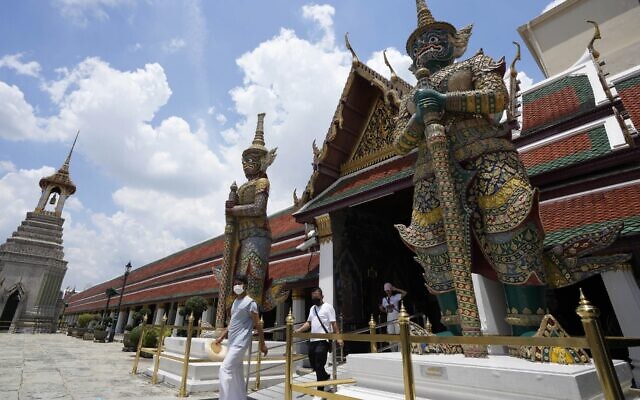
Tourists visit the Grand Palace in Bangkok, Thailand, Friday, June 17, 2022. Summer travel around the world is underway, but a two-year full recovery from the coronavirus could last as long as the pandemic. (AP photo/Sakkai Lalit)
“The road to a full recovery is very long, but at least we are back on it,” said Sanga Ruangwatnakul, president of the Khao San Road Business Association in Bangkok.
Despite the huge return of passengers, challenges and uncertainty cast a shadow over the post-pandemic scenario. Full recovery is generally not expected until at least 2024. Concerns hover around a long list of issues, including inflation, supply chain problems, rising infection rates and labor shortages.
Before June was over, chaos had come to define the journey in the summer of 2022. Airports and airlines that had cut short during the depths of the pandemic struggled to keep up with demand, resulting in canceled flights, lost baggage and other, mixed nightmares. Industry insiders said panicked tourists booked trips on short notice, making it difficult for hotels, tour operators and others to plan.
The Russian invasion of Ukraine, too, added risks to an uneven recovery and contributed to inflation – a factor that could become a major deterrent even if other pandemic pains subside.
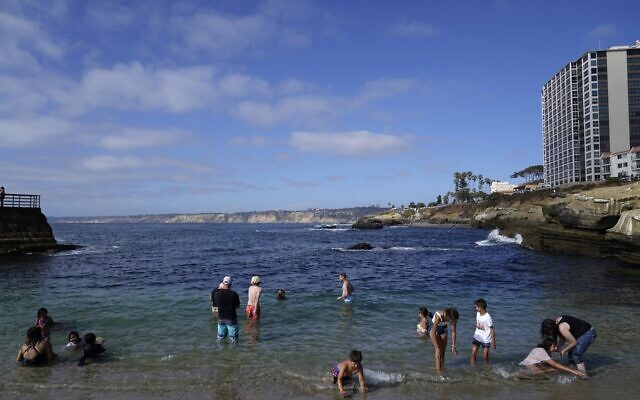
Visitors line an iconic beach in La Jolla on Friday, June 17, 2022 in San Diego, California (AP Photo/Gregory Bull)
“It is really the fall season that is of concern,” said Sandra Caravao, head of market intelligence and competition at the United Nations World Tourism Organization. If inflation continues to rise, particularly in interest rates, “families will have to rethink their spending.”
For all the virus travel restrictions that have been lifted, security is unlikely to be less of a concern.
“The most important thing for people when they decide to go on vacation is health and safety. There has always been,” said Simon Hudson, a professor of tourism at the University of South Carolina who writes a book about recovering from the pandemic. “It’s going to take a while.”
Starting with the bright spots, the United Nations reported that during the first quarter of 2022, international arrivals nearly tripled in the same three months as the previous year. March this year produced the healthiest results since the start of the pandemic, with arrivals down to almost 50% of 2019 levels. The UNWTO said in projections that it could rise to 70% of 2019 by the end of this year, revised in May.
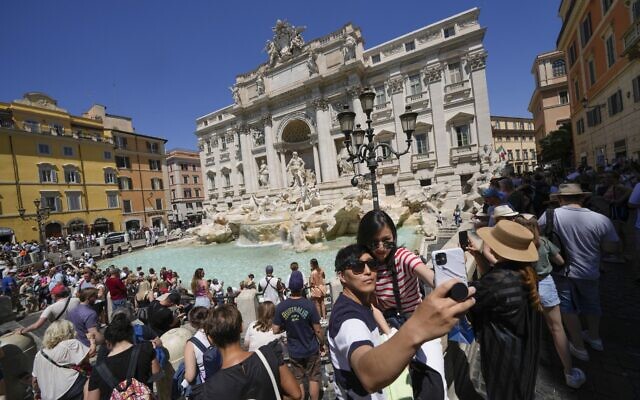
Tourists taking a selfie in front of the Trevi Fountain in Rome on Monday, June 20, 2022 (AP Photo/Andrew Medichini)
It is producing encouraging signs in some places from Israel to the United States, Italy, Mexico and France. Resets like Thailand are all the rage. Big plans are lined up for 2023 in the United States, such as a cruise featuring some of Broadway’s biggest stars.
Those conjectures are on the ground, typically in places where there were early aggressive and agile restrictions and adapted by raising multiple protections as vaccination increased and the Omicron variant proved to be less lethal than other forms.
One restaurant said foreign tourists are flocking to places like the French Riviera, where supply-chain issues are making everything more expensive.
“It’s been hot here since spring, every single night,” said Eli Dagher, manager of La Villa Maisonette in Nice. Since April, he said, the bistro has been packed with visitors from Scandinavia and the Netherlands, but especially from the United Kingdom and the United States.
In Branson, Missouri, which is known for its country concerts and outdoor attractions, no rebounding is necessary. Branson Convention and Visitors Bureau spokeswoman Lynn Berry said last year it hosted a record 10 million visitors and appears to be on pace to reach the top.
Jeff Johnson, co-owner of Shepherd of the Hills Adventure Park, says that for a short closure in 2020, a loyal customer base has been drawn from nearby states and cities, such as St. Louis and Kansas City. “When we reopened,” he said, “it never slowed down.”
In Italy, tourists – especially from the United States – returned in large numbers this year. The onset of Easter was particularly notable in Rome, reflecting the demand for visiting perennial All-Star sites such as the Sistine Chapel and the Colosseum.
“There is a great craving to travel, like popping a (cork) out of a bottle,” said Bernabé Bocca, president of the National Hotel Association Federalbergie. The moment Italy eased security measures in April, “a tsunami of bookings from the United States came at a speed never seen before.”
Expectations are high for Thailand too, in the wake of its announcement last month that the country was dropping almost all requirements except for proof of vaccination, or in its absence, a negative coronavirus test.
Already the return of tourists has revitalized local tourism. Bangkok’s famous backpacker street, Khao San Road, which was nearly deserted last year, is receiving 5,000 visitors a day – promising numbers but a far cry from the 30,000 daily visitors before the pandemic, according to trade union president Ruangwatnakul.
Thailand is an instructive look at the struggle to recover, of which China is a major factor. As of 2019, Chinese tourists accounted for a quarter of foreign arrivals in Thailand, but there is no indication they will return in such numbers.
The apt nature of the post-pandemic ascent can be seen from Israel to India.
“I think we are moving in the right direction,” said Vaibhav Khulbe, owner of the restaurant in Dharamsala, India, where the country expects 4 million visitors this year, compared to 11 million in 2019.
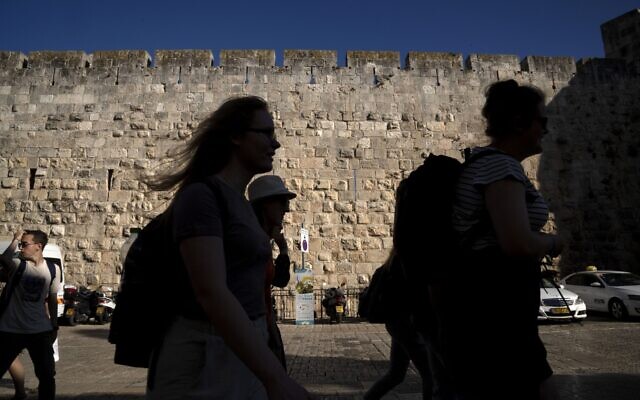
Tourists visit the Old City of Jerusalem on Wednesday, June 15, 2022 (AP Photo/Maya Alleruzzo)
Like anywhere else in the world, Israel is struggling to match its record-setting tours of 2019, when 4.5 million people visited. Tourism ministry officials say Israel expects less than half this year – about 2 million visitors – despite the lifting of all restrictions. Among other concerns, political conflict is an issue following the fall of the government last month, as well as a wave of deadly Palestinian violence inside Israel in the spring.
Still, the ministry is reporting a steady, though gradual, climb. An unusual convergence of springtime religious holidays for Jews, Christians and Muslims helped boost visitors in April. By May, the number of visitors had increased to about 57% from the same month two years earlier.
But the recovery has been uneven for many, especially in the occupied West Bank.
“We were expecting more people to come at least this month like May, June, but even then it is very slow,” said Wissam Salsa, manager of The Walled of Hotels in Bethlehem, the ancient city where President Joe Biden is expected to visit Israel and Saudi Arabia in July.
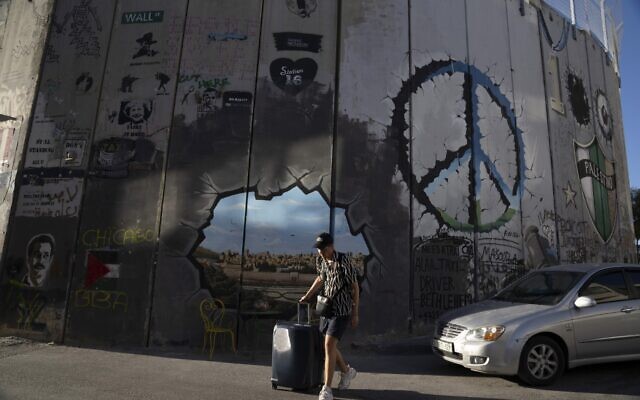
A foreign tourist crosses Israel’s security barrier as he arrives to check in at any Walled Off hotel in the West Bank city of Bethlehem, Sunday, June 19, 2022 (AP Photo/Maya Aleruzzo)
Designed by London-based artist Banksy and full of color, the hotel is locally run and renowned – but is struggling. It expanded physically during the pandemic, but is now forced to reduce its workforce from about 50 people to 32. Its occupancy rate in June was around 30 per cent.
“Tourism here,” Salsa said, “is very fragile.”